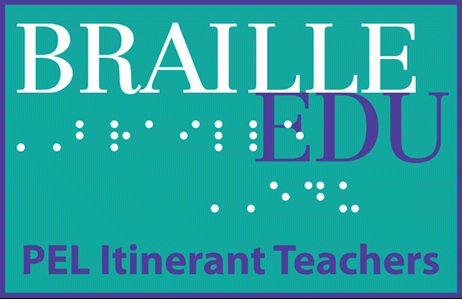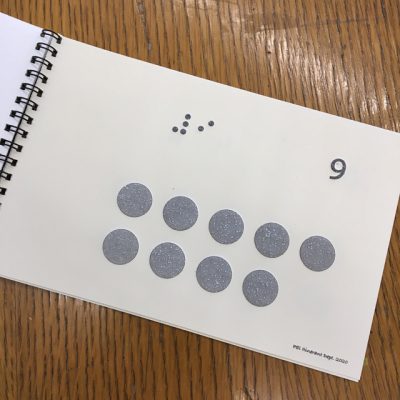
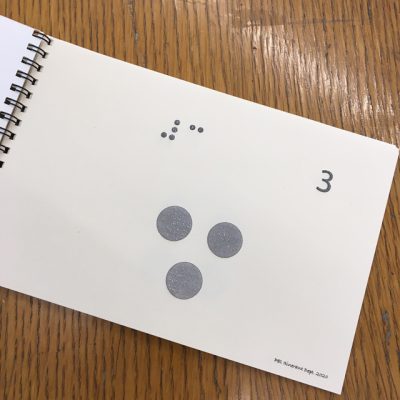
(Braille tactile books used for learning Braille numbers)
Tactile books as well as braille flashcards can be created to work on numeric symbols and numbers as well as letters/words and punctuation symbols. Note that the top right-hand corner cut-out notch indicates the correct side up of the flashcards.
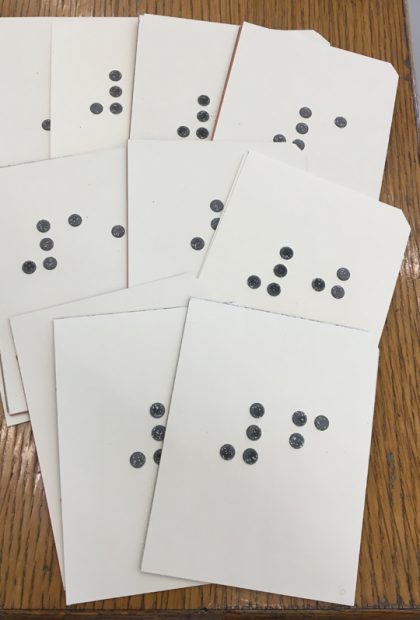
(Braille tactile book pages showing the Braille numbers)
Exposure to various methods of learning braille can include understanding of the braille cell – a six dot cell that represents letters, numbers, math symbols. There are playful and inclusive products for young children such as Tack-Tiles® Braille Systems based on Lego-type blocks. Each brick has six-cell capability for learning. Children can benefit by using this form of braille to create words and use basic symbols and punctuation. (www.tack-tiles.com)
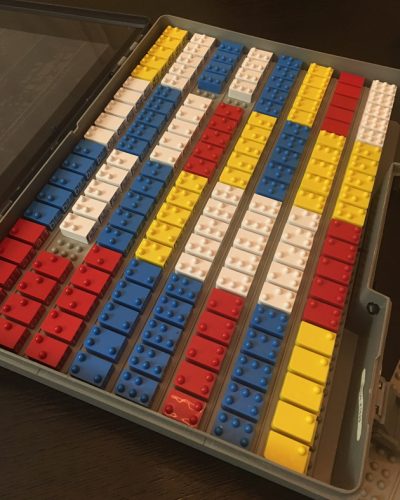
(Braille tactile block set)
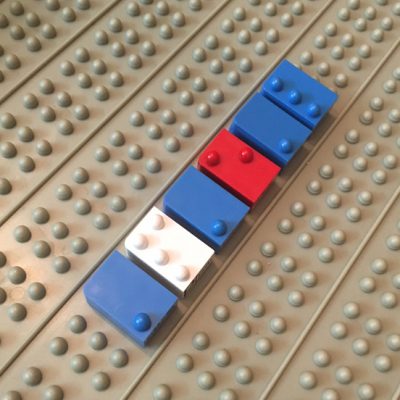
(An example of Braille tactile blocks being used)
Reading in braille with daily exposure to tactile graphics, will enhance making connections with text and give purpose to braille literacy for the child. As braille learning advances, combining braille text with tactile pictures allows the learner to make connections in a 2-D format. Tactile graphic books can be created as needed for the young learner.

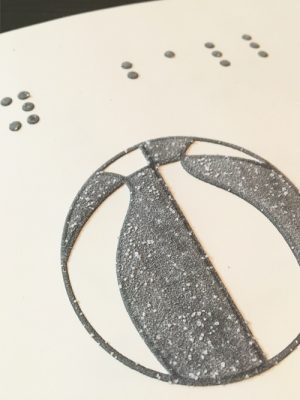

(Braille book with the picture of a frying pan)
(Braille book with the picture of a beach ball)
(Braille book with the picture of a girl rolling out dough for baking)
Tactile graphics require explanations as details can be challenging to decipher. Allowing children to take the time to explore the graphic and ask questions about the picture will provide healthy discussion and give the teacher an opportunity to introduce and use necessary vocabulary related to the topic.
Reading Instruction:
Determining the best approach to teach reading instruction will vary on the child’s abilities and previous knowledge. For further information and references on using different reading approaches with students who are learning braille, consult the bibliography at the end of this section or go to the Bibliography and Resources sections.
- Instructional Strategies for Braille Literacy, (Wormsley D.P. et al, 1997).
- Foundations of Braille Literacy, (Rex, E. et al, 1994).

(A Braille device that connects to a computer and is used for reading and writing Braille on a computer)
(www.humanware.com)
Presently, users of the braille code are adapting to new technological innovations. Access is facilitated by the touch of the keyboard, in an embossed format (braille print), through an automated braille device using raised pins and advancements in software for greater accessibility.
Information for braille lessons and other areas of interest for teaching can be found on the following websites:
- www.brailleauthority.org (BANA – UEB Braille Code updates)
- www.hadley.edu (Hadley School for the Blind)
- www.uebonline.org (Braille learning for the non-sighted and sighted)
Bibliography
Rex, E. et al (1994). Foundations of braille literacy, (pp.15-33). New York, New York, AFB Press.
Swenson, Anna. (1999). Beginning with braille: Firsthand experiences with a balanced approach to literacy pp.21-22, 36, New York, New York. AFB Press.
Wormsley, D. et al (1997). Instructional strategies for braille literacy, (p.47). New York, New York, AFB Press.
